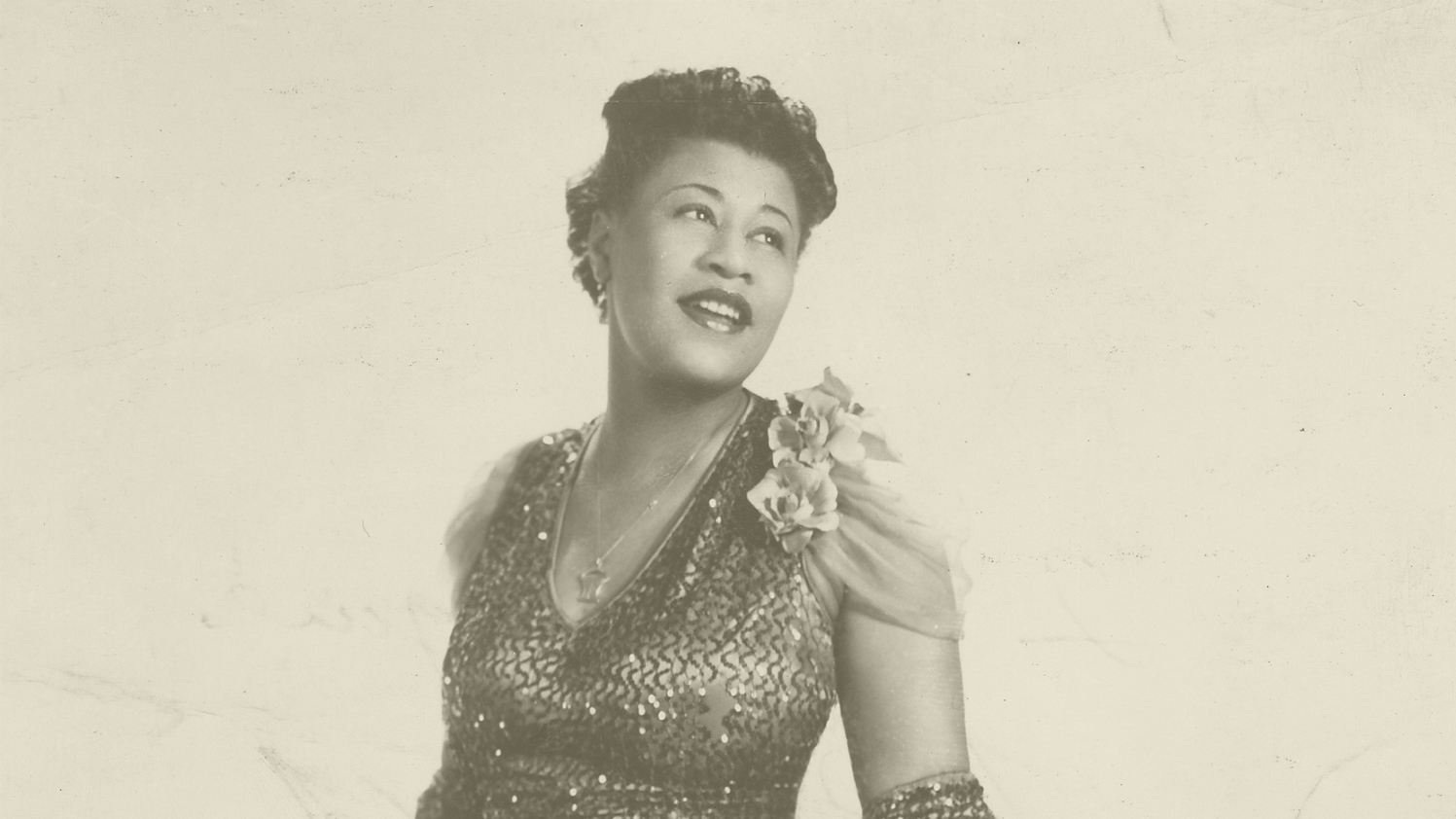Ella Fitzgerald – A Complete Biography
Introduction
Ella Jane Fitzgerald (1917–1996) is widely celebrated as the “First Lady of Song”—a jazz vocalist whose musical language was steeped in swing and bebop but drew deeply on the blues. Across six decades she became an American cultural icon through her pure tone, flawless time, elastic phrasing, and virtuosic scat improvisation, while also helping canonize the Great American Songbook through her landmark “Songbook” albums. Her career charted a path from Depression-era hardship to global acclaim, with 13 GRAMMYs, the National Medal of Arts, and the Presidential Medal of Freedom among her honors.

Childhood
Fitzgerald was born April 25, 1917, in Newport News, Virginia, to William Fitzgerald and Temperance “Tempie” Henry. After her parents separated, Tempie moved with young Ella to Yonkers, New York, where Ella grew up amid financial insecurity but showed early musical aptitude and a love for popular radio singers like Connee Boswell.
Youth
In her teens, Fitzgerald’s life unraveled after her mother died; she skipped school, was detained by authorities, and was sent to the New York Training School for Girls in Hudson, where she endured abusive conditions before escaping. That crucible preceded a turning point: on November 21, 1934, a shy 17-year-old walked onstage at the Apollo Theater’s Amateur Night intending to dance—but, intimidated by a preceding act, she sang instead, won first prize, and set a new course for her life. Within months she was singing with drummer Chick Webb’s band at Harlem’s Savoy Ballroom.
Adulthood
With Chick Webb’s orchestra, Fitzgerald became a national star when she co-wrote and recorded the playful smash “A-Tisket, A-Tasket” (1938). After Webb’s death in 1939 she briefly led the group (as Ella Fitzgerald and Her Famous Orchestra) before embarking on a solo career, recording primarily for Decca. In 1946 she began a lifelong professional partnership with impresario Norman Granz—touring with Jazz at the Philharmonic, insisting on desegregated venues, and, beginning in 1956, recording for his new Verve Records label. There she made the era-defining Songbooks devoted to Cole Porter, Rodgers & Hart, Duke Ellington, Irving Berlin, and George & Ira Gershwin, among others, which elevated American popular song to “repertoire” status. Collaborations with Louis Armstrong, Duke Ellington, and Count Basie further cemented her stature.
Her personal life remained largely private. She annulled a brief 1941 marriage to Benny (Ben) Kornegay; in 1947 she married bassist Ray Brown, with whom she later adopted her nephew (Ray Brown Jr.). Though divorced in the early 1950s, Fitzgerald and Brown continued to perform together professionally.
Fitzgerald’s stage brilliance endured well into the 1960s and beyond. The live album Ella in Berlin (1960) captured her witty, high-wire recovery after forgetting the lyrics to “Mack the Knife,” a performance that won two GRAMMYs; her scatting tour-de-force on “How High the Moon” became a touchstone of jazz vocal improvisation.
Major Compositions (and Signature Recordings)
Although not a prolific songwriter, Fitzgerald co-wrote one enduring hit: “A-Tisket, A-Tasket” (1938), crafted with arranger Van Alexander from a children’s rhyme; it became one of the Swing Era’s defining records.
Her legacy rests on landmark recordings that fused jazz, blues, and American standards:
- The Songbooks (Cole Porter; Rodgers & Hart; Duke Ellington; Irving Berlin; Gershwin, 1956–59): definitive, historically minded pop-jazz albums that helped codify the Great American Songbook.
- “Mack the Knife” (live, Berlin, 1960): the improvisatory tour de force that earned her GRAMMYs for the single and album.
- “How High the Moon” (notably her 1960 Berlin version): a benchmark in scat singing and later a GRAMMY Hall of Fame selection.
- Blues projects: While principally a jazz artist, Fitzgerald devoted an entire LP to blues tradition on These Are the Blues (1963), interpreting classics by Bessie Smith, Ma Rainey, Leroy Carr, and W.C. Handy.
Death
Diabetes complicated Fitzgerald’s later years; she underwent double below-knee amputations in 1993. She died of a stroke at her home in Beverly Hills on June 15, 1996, at age 79. Obituaries and tributes hailed her as one of the 20th century’s supreme musicians.
Conclusion
Ella Fitzgerald’s journey—from a vulnerable Harlem teenager to the most beloved singer in jazz—mirrors the American century’s struggles and triumphs. She made the blues’ feeling and jazz’s freedom legible to vast audiences without sacrificing musical rigor. Her honors testify to that impact: 13 GRAMMY Awards (including a pioneering 1967 Lifetime Achievement Award), the 1987 National Medal of Arts, and the 1992 Presidential Medal of Freedom. Generations of vocalists continue to measure themselves against her clarity of tone, rhythmic buoyancy, and inexhaustible imagination.

Comments are closed